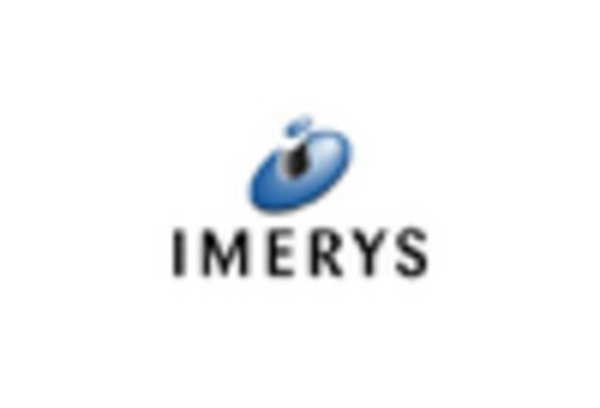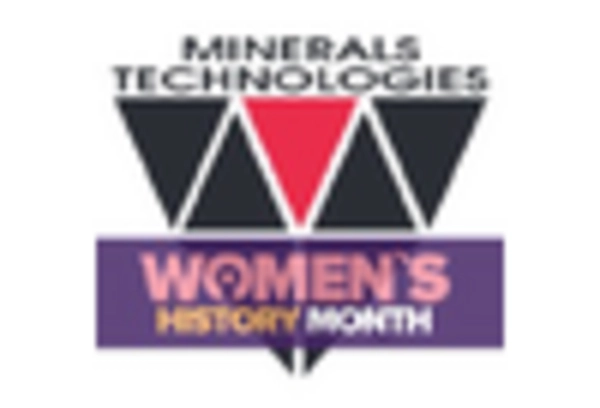Advancements in Material Science
The Calcium Aluminosilicate Market is benefiting from ongoing advancements in material science, which are enhancing the properties and applications of calcium aluminosilicate. Innovations in processing techniques and formulations are leading to the development of high-performance materials that cater to diverse industrial needs. For instance, the incorporation of calcium aluminosilicate in advanced ceramics and composites is gaining traction due to its superior mechanical strength and thermal resistance. As industries seek to improve product performance and reduce costs, the demand for such innovative materials is likely to rise. This trend indicates a promising future for the calcium aluminosilicate market, as it aligns with the broader movement towards high-tech materials in various applications.
Rising Demand in Construction Sector
The Calcium Aluminosilicate Market is experiencing a notable surge in demand, primarily driven by the construction sector. As urbanization accelerates, the need for durable and sustainable building materials has intensified. Calcium aluminosilicate, known for its excellent thermal stability and mechanical properties, is increasingly utilized in cement and concrete applications. According to recent data, the construction industry is projected to grow at a compound annual growth rate of approximately 5% over the next few years, further propelling the demand for calcium aluminosilicate. This material not only enhances the performance of construction products but also contributes to the overall sustainability goals of the industry, making it a preferred choice among manufacturers.
Environmental Regulations and Compliance
The Calcium Aluminosilicate Market is increasingly shaped by stringent environmental regulations aimed at reducing the carbon footprint of industrial processes. As governments and regulatory bodies impose stricter guidelines on emissions and waste management, manufacturers are compelled to adopt more sustainable practices. Calcium aluminosilicate, being a naturally occurring mineral, offers an eco-friendly alternative to synthetic additives in various applications. The market is witnessing a shift towards materials that comply with these regulations, which is likely to drive the adoption of calcium aluminosilicate in sectors such as construction and food processing. This regulatory landscape presents both challenges and opportunities for the industry, as companies strive to innovate while adhering to environmental standards.
Growth in the Food and Beverage Industry
The Calcium Aluminosilicate Market is significantly influenced by the food and beverage sector, where it is employed as an anti-caking agent and stabilizer. The increasing consumer preference for processed and packaged foods has led to a rise in the use of calcium aluminosilicate in various food products. Market data indicates that the food additives market is expected to expand at a rate of around 4% annually, which bodes well for the calcium aluminosilicate segment. Its ability to improve the texture and shelf life of food products makes it an essential ingredient for manufacturers aiming to meet consumer demands for quality and safety. This trend underscores the versatility and importance of calcium aluminosilicate in the food industry.
Expanding Applications in Pharmaceuticals
The Calcium Aluminosilicate Market is also experiencing growth due to its expanding applications in the pharmaceutical sector. Calcium aluminosilicate is utilized as an excipient in drug formulations, where it serves as a binder and stabilizer. The increasing focus on drug development and the rising prevalence of chronic diseases are propelling the demand for effective pharmaceutical formulations. Market analysis suggests that the pharmaceutical excipients market is projected to grow at a rate of approximately 6% annually, which is likely to benefit the calcium aluminosilicate segment. Its compatibility with various active pharmaceutical ingredients enhances its appeal, making it a valuable component in the formulation of both generic and branded medications.

















Leave a Comment